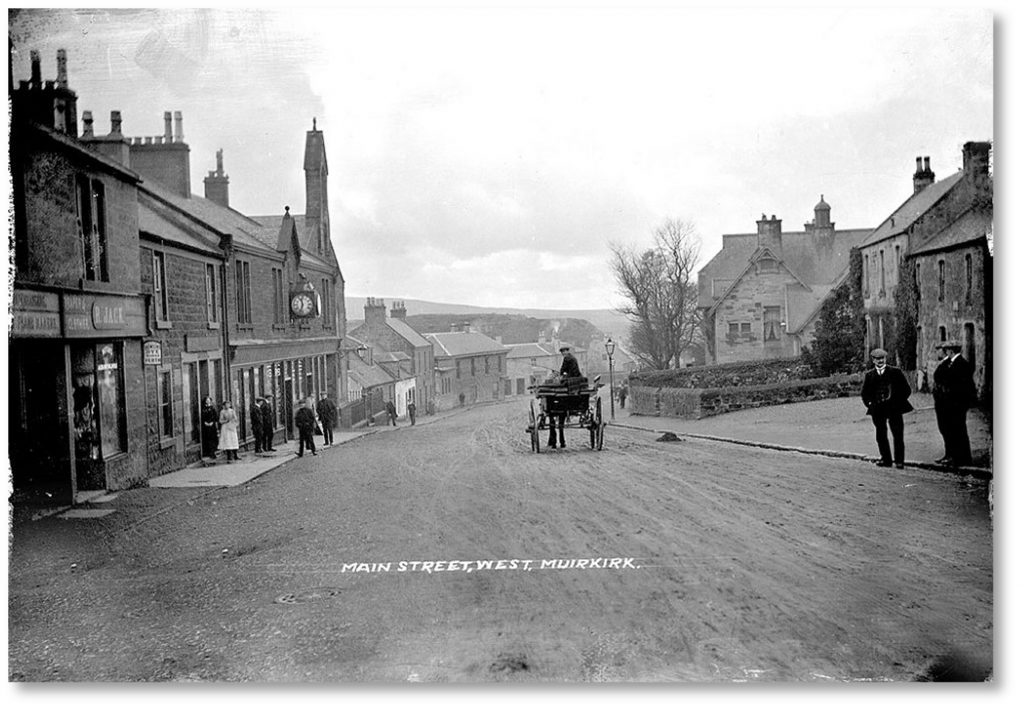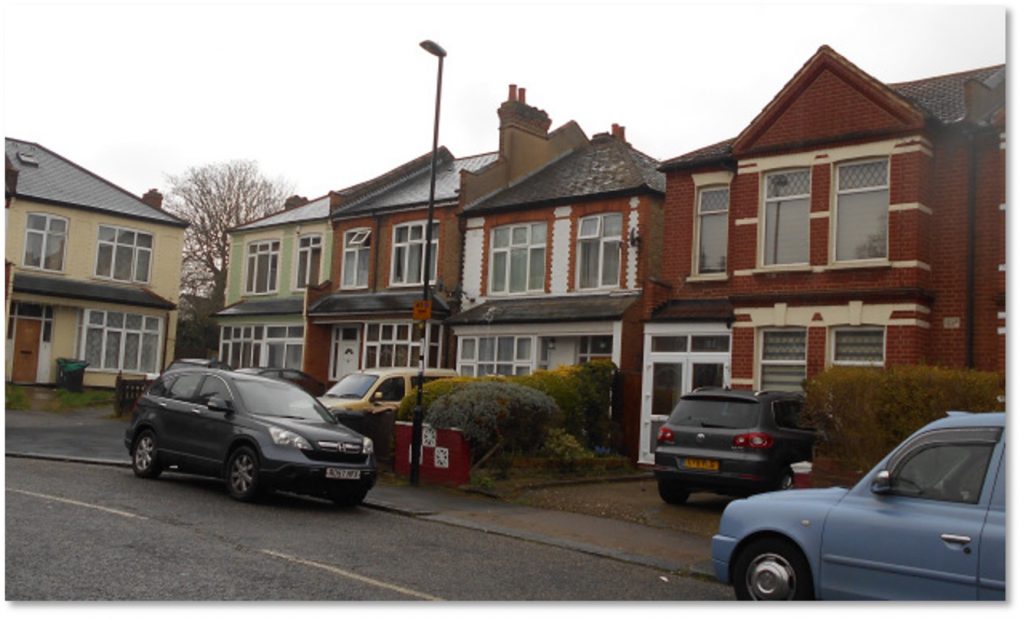“A family of tool-handle makers”
Background
Like many other roads on the estate, Muirkirk Road was named after a place in Scotland, in this case the former mining village of Muirkirk, which is situated around 40 miles south of Glasgow on the A70. It’s in Ayrshire, 20 miles or so from where Archibald Corbett eventually built his baronial mansion, which he called Rowallan.

Old photograph of Muirkirk Village, East Ayrshire, Scotland
Muirkirk Road is one of the mid-sized roads in the Corbett Estate. It runs from Sandhurst Road in the north to Ardoch Road in the south and runs along the western edge of Killearn, Braidwood, Dowanhill and Merchiston Roads. Penberth Road (not a Corbett Street) also runs off Muirkirk to the West.
Building of the street commenced in 1906, and when it was finished there were 110 houses. The 1911 census recorded 495 people residing in the road. That equates to 4.62 people per house, above the average in the Estate.
Shops

Modern day shopping parade on Muirkirk Road
There were originally 17 shops in the parade on the west side of Muirkirk Road (one of six parades on the Estate) and four more opposite them on the west side. There were greengrocers, a coach painters, butchers, milk carriers, jewellery repairers, confectionery dealers, bakers and more. Today Oakman’s is the only butcher trading on the Estate (see photo above).
The Early Residents: details from the 1911 Census
There were more female residents than male in Muirkirk, with 52.73% female and 47.27% male. (pretty much spot-on the Estate average of 53% female and 47% male).
The top two adult female first names here were Mary and Alice, with the male equivalents being William and John. Mary and William were by far the most popular male and female adult names in the estate. For children, it was Winifred and Leslie in Muirkirk.
The most popular kind of work for the citizens of Muirkirk Road was as a Clerk. Of the 212 people in employment, 45 said that they did some sort of office job – a little over 20%, which is an enormous figure for a single profession. Amongst the non-office workers, there was, a Book Folder at number 67, and a Military Whip and Cane Manufacturer at number 87.
The street record for the highest number of children in a family is 7: the Roddis family at No. 51 had four boys and three girls, whilst James and Lucy Batch at No. 128 had five boys and two girls. James and Lucy were aged 50 and 46 respectively and their seven children were aged 22, 20, 19, 16, 11, 10 and 4. James Batch senior was a ’Tool Handle Maker’ and so were three of his sons – James Sydney (22), Robert Harold (20) and Percy Victor (16).
The largest number of people in one house on the day of the 1911 census was 11 at No. 54 where Mr & Mrs Wise and their 6 children, plus a brother-in-law, had been joined by 2 visitors.
Emerald Warren at No. 3 Claremont Garden, Muirkirk Road takes the road’s prize for ‘resident from furthest away’: she was from South America. Overall however, the vast majority of the street’s residents (70%) had been born in what today we’d call Greater London. There were families from Brockley, Catford, Dulwich, Greenwich, Peckham, Lewisham, New Cross, Southwark Walworth, and Woolwich. Most notably there were 19 from Bermondsey, 30 from Camberwell and 38 from Deptford. Of the 495 residents in Muirkirk Road, 236 had moved to the estate from other parts of South east London.
The oldest resident at the time of the 1911 census was the impressively named Gaston Delalande, who lived at No. 140 and was 74 years old.
Other residents: a Builder and a Wharfinger
Frederick Taylor was one of the builders whom Corbett sub-contracted to build houses on the Estate. In 1911 he was living at 171 Wellmeadow Road, but there is an entry in the 1914 Kelly’s Directory listing a builder, Frederick Taylor, at 152 Muirkirk Road (below), this may have been the same man, or it could have been his son, also Frederick, who was carrying on the business at that time.

No. 152 Muirkirk Road, home of builder Frederick Taylor
At No. 148 we find Charles Hill, aged 53, who listed his profession as a Wharfinger’s Clerk. A Wharfinger is an archaic term for a person who is the keeper or owner of a Wharf.
The wharfinger takes custody of and is responsible for goods delivered to the wharf, typically has an office on the wharf or dock, and is responsible for day-to-day activities including slipways, keeping tide tables, and resolving disputes. Today they’d be known as a Harbourmaster.